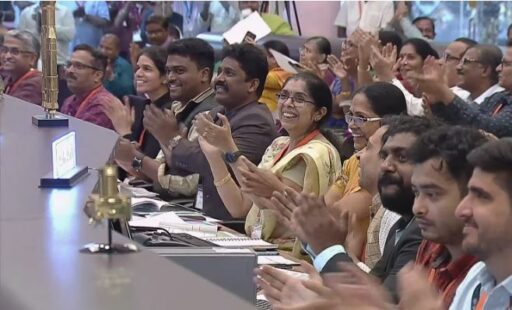
India made global headlines in August 2023 by achieving what no other country had before — successfully landing a spacecraft near the Moon’s south pole. The Chandrayaan-3 mission, spearheaded by the Indian Space Research Organisation (ISRO), marked a monumental milestone not just for Indian science and technology, but also for space exploration globally.
The Mission That Captivated the Nation
Chandrayaan-3 launched from the Satish Dhawan Space Centre on July 14, 2023, and after a 40-day journey through space, the Vikram lander made a soft landing on the Moon’s southern hemisphere on August 23, 2023, at approximately 6:04 PM IST.
The excitement across the nation was unmatched. Schools, offices, and homes tuned in to live broadcasts. Social media exploded with pride, memes, and praise. India’s scientific prowess was once again in the global spotlight.
Why the South Pole Matters
Unlike previous lunar missions that targeted equatorial regions, Chandrayaan-3 aimed for a much more difficult and less explored zone — the Moon’s south pole. This area holds unique significance:
-
It has permanently shadowed craters believed to contain water ice.
-
The region could serve as a future base for human space missions or fuel stations for deep space exploration.
-
It’s a challenging terrain with rugged topography, making India’s precision landing all the more impressive.
Who Was Onboard?
The lander module named Vikram, and the rover Pragyan, were the two key components. Once Vikram touched down, it deployed the Pragyan rover, which then began its mission — exploring lunar soil, analyzing its composition, and sending back high-resolution images and data.
Within days, Pragyan confirmed the presence of sulfur, oxygen, aluminum, iron, and titanium on the surface. These findings have expanded our understanding of the Moon’s mineral composition and opened new scientific discussions.
Global Applause and Political Significance
India became the first nation to land on the lunar south pole and only the fourth country to perform a successful lunar landing after the US, Russia, and China.
World leaders, space agencies, and media outlets across the globe praised the achievement. Prime Minister Narendra Modi, who joined the live broadcast remotely from South Africa during the BRICS summit, declared:
“This success belongs to all of humanity. This mission will inspire future generations of scientists.”
Back home, the ruling BJP used the success to highlight India’s growing global leadership under Modi’s governance, while the opposition lauded ISRO’s resilience and brilliance.
The Emotional Side of Science
This wasn’t just a technical feat; it was a national moment. Scientists who worked on the mission for years were seen celebrating with tears of joy and hugging one another as the lander touched down.
ISRO Chairperson S. Somanath credited every engineer, scientist, technician, and support staff who made the dream a reality.
Social media buzzed with hashtags like:
-
#Chandrayaan3
-
#ProudIndian
-
#ISROMission
Young students and science enthusiasts across the country were inspired. The mission became a cultural moment, referenced in memes, Bollywood dialogues, and classrooms.
Lessons from Chandrayaan-2
This success story is even more powerful when seen through the lens of Chandrayaan-2, which in 2019 failed during the final minutes of landing. But ISRO took the setback as a lesson, improved the design, navigation, and landing algorithms, and came back stronger.
Their journey reflects India’s broader story — resilience, learning from failure, and rising against odds.
What Comes Next?
Chandrayaan-3 was a stepping stone. ISRO is now setting its sights on the following:
-
Gaganyaan: India’s first human spaceflight mission.
-
Shukrayaan-1: A mission to explore Venus.
-
Collaborations with NASA and JAXA for Mars and other deep space ventures.
India is slowly but surely cementing its place among the giants of space exploration.